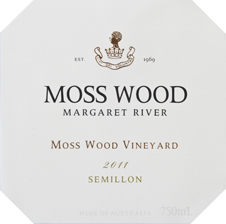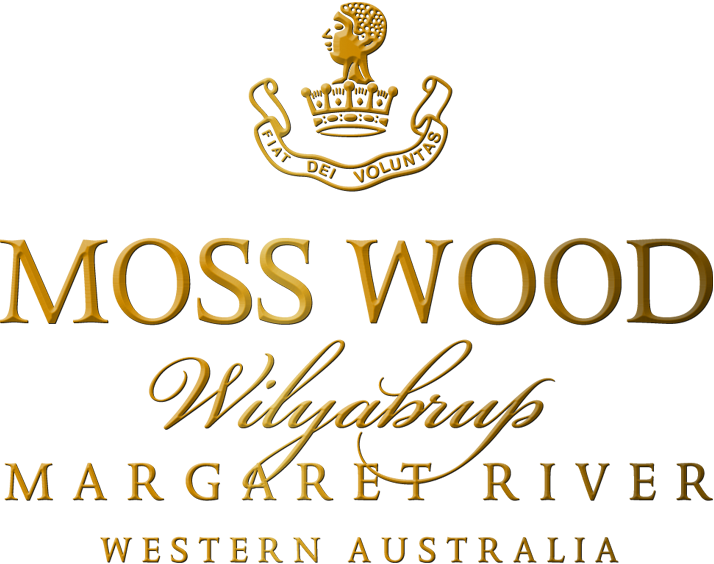Moss Wood 2011 Semillon

Wine Facts
| Harvested: | 24/2/2011 |
| Bottled: | 30/6/2011 |
| Released: | 16/12/2011 |
| Yield: | 11.08 t/ha |
| Baume: | 12.80 |
| Alcohol: | 13.00% |
| Vintage Rating: | 9/10 |
SOLD OUT
Tasting Notes
Colour: Medium straw colour, with green tints; bright condition
Nose: Classic young Semillon - fresh but complex combination of lemon rind, apple and fig.
Palate: full bodied and generous, with apple, grapefruit and fig flavours across the middle and a honey-like sweetness at the back, sitting over just a touch of astringency at the back.
Moss Wood 2011 Semillon – James Suckling, jamessuckling.com
Lemon, lime, grapefruit rind and curd that we see across Australia, but grassy and with a rounder palate. Good sappy grassy length.
Moss Wood 2011 Semillon – Huon Hooke
Nettley, herbal aromas with a faint suggestion of regional snow pea and a fresh, flavoursome and straw-like palate.
Moss Wood 2011 Semillon – Julia Harding, jancisrobinson.com
Watery white. Floral and clementine notes, definitely the most fragrant so far but with grassy undertones. Quite broad on the palate, with a slight grip to the texture, but not terribly concentrated. Finishes a little too flowery for my taste though it does have a nice citrus clarity on the…
Moss Wood 2011 Semillon – Nick Stock, “Good Wine Guide 2013” goodfood.com.au
This is a semillon that aims for the complex and ageworthy style and does a darn good job of it. The nose has grilled hazelnuts, nougat and lemon pith, some gently toasty notes, yellow flowers and grassy hints – decidedly savoury. The palate is layered with marzipan and green melon,…
Vintage Notes
We are so very fortunate the story of the run of good vintages continues with the 2011 Semillon. The highlight of the last 4 years is the relative lack of high temperatures and how this has allowed all the white varieties to retain fresh, lifted fruit aromas and yet have the rich generosity that comes with full ripeness. Vintages from the past which provide the best comparison for this type of season are probably 1983, 1995 and 2003.
In 1983, all our varieties produced exciting wines and the Semillon was probably the finest we have made. Harvested on 7th March, it produced a solid 12.35 tonnes per hectare of crop and ripened to 12.3 Baume. The 1995, noted for it’s generous, complex wines, was picked on 23rd of February, yielding a creditable 11.32 tonnes per hectare and a ripeness of 12.8 Baume. Finally, in 2003 the Semillon gave us a 8.74 tonnes per hectare crop, picked on 15th March at 12.9 Baume. The very low yield gave us a wine with great palate concentration but as is often the case, it was relatively restrained on the nose.
Compare these outcomes with the 2011. It was harvested on 24th February, producing a yield of 11.08 tonnes per hectare, at a ripeness of 12.8 Baume. According to the numbers, this latest vintage compares best with 1995 and certainly it does have that wines generous palate but interestingly, it also has the bright fruit notes of 1983 and so probably lies somewhere between the two. Either way, while we are very proud of the consistency of our Semillon wines, we think the 2011 offers a serious challenge to the '83 as our finest ever.
All other aspects of the growing season went well and we had no worries with disease and the bird nets helped keep the silvereyes and crows at bay.
Production Notes
Median Harvest Dates and Ripeness: 24th February, 2011; 12.8 Baume
The fruit was hand harvested and delivered to the winery, where it was de-stemmed, crushed and pressed. The free run and pressings juice fractions were kept separate. The former was settled for 48 hours, the clear juice was racked to its fermentation tank and then some solids, equivalent to 2% of the volume, were blended back in. A pure yeast culture was then added and fermentation proceeded at 17C for 16 days. In the meantime, the pressings were fined and settled and the clear juice was racked and seeded for a separate, pure yeast fermentation.
After a week of settling on their gross lees, the two components were racked and blended to produce the final wine.
The next step was to conduct fining trials and a series of different agents were trialled. After tasting we concluded no treatments were required, other than a bentonite fining for protein stability.
After sterile filtration, the wine was bottled on 30th June, 2011.
Cellaring Notes
Although this is a classic cellaring style, it still has sufficient fleshiness and generosity on the palate to be enjoyed now. However, the fruit depth, acidity and tannin give this vintage all the hallmarks of a classic, aging Semillon. Accordingly, for those who enjoy the mature flavours in wine, we recommend it be cellared for at least 5 years to allow these secondary notes to evolve. This is our minimum recommended cellaring time but for those who have the patience (and the space), we advocate at least 15 years, to ensure the wine is seen with full maturity.
